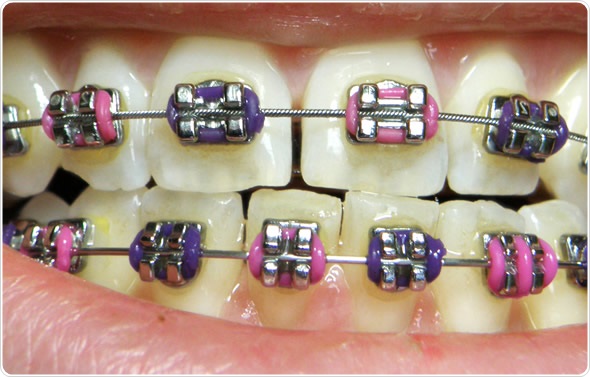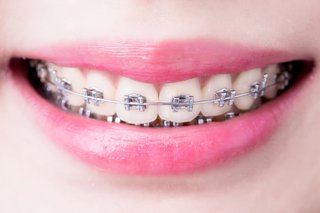Selecting the very best Cumming Orthodontics for Effective Braces and Aligners Solutions
Comprehensive Overview to Orthodontics Treatments for Dealing With Dental Misalignments
In the realm of orthodontics, the journey to attaining a flawlessly straightened smile involves a myriad of procedures tailored to fix dental imbalances. From traditional braces to undetectable aligners and also surgical options, the field of orthodontics offers a variety of options to resolve differing levels of oral irregularities. Understanding the complexities of each procedure, including their systems, advantages, and possible drawbacks, is essential in making informed decisions about one's orthodontic treatment. As we navigate through the extensive guide to orthodontic treatments for dealing with oral imbalances, the complex details of each method will certainly unravel, clarifying the path toward a unified and useful dental placement.
Orthodontic Procedures Overview

Regular changes and surveillance are critical components of orthodontic therapy to make sure progression is on track and to make any kind of essential alterations along the means. By undertaking orthodontic treatments, individuals can not just accomplish a straighter smile but also improve their overall dental wellness and feature.
Standard Braces: Exactly How They Work
When taking into consideration orthodontic therapies for dental imbalances, conventional dental braces stick out as a time-tested approach for fixing teeth placing. Conventional dental braces consist of braces, cables, and bands that collaborate to use constant stress on the teeth, gradually relocating them into the wanted positioning. The braces are affixed to the teeth using an unique adhesive, and the wires are threaded through the braces. By readjusting the tension of the wires, orthodontists can regulate the instructions and force put on each tooth, leading them into appropriate placement over time.
One key aspect of exactly how typical braces work is the procedure of bone renovation. As stress is put on the teeth with the dental braces, the bone surrounding the teeth is reshaped to support the new tooth placements. This improvement is important for the long-lasting stability of the corrected alignment. Clients will certainly require normal adjustments at the orthodontist's office to ensure the dental braces remain to use the proper stress for reliable teeth activity.
Unseen Aligners: Advantages And Disadvantages
Undetectable aligners use a hassle-free and very discreet option to conventional braces for dealing with oral misalignments. These clear, customized trays are virtually invisible when put on, making them an attractive option for people seeking a more cosmetically pleasing orthodontic therapy. One of the primary benefits of unnoticeable aligners is their removability, allowing for easier upkeep of oral health contrasted to standard braces. Patients can eliminate the aligners prior to eating or cleaning their teeth, lowering the risk of food obtaining stuck in the device and simplifying the cleansing process.

Surgical Orthodontic Options
Surgical interventions in orthodontics existing sensible alternatives for resolving intricate oral misalignments that may not be effectively dealt with through conventional orthodontic treatments. While unseen aligners and basics typical dental braces can remedy numerous orthodontic issues, particular situations need surgical treatment to accomplish optimal outcomes. Surgical orthodontic choices are usually recommended for extreme malocclusions, considerable jaw discrepancies, and instances where the underlying bone framework needs alteration to accomplish proper placement.
One typical medical orthodontic procedure is orthognathic surgery, which entails repositioning the jaws dental implant surgery to deal with practical issues such as problem chewing or talking. This surgery is usually carried out in collaboration with an orthodontist who aids line up the teeth before and after the treatment. Surgical orthodontics might likewise involve procedures to subject affected teeth, eliminate excess gum cells, or reshape the jawbone to create a more harmonious face profile.
Prior to considering surgical orthodontic options, individuals undertake an extensive evaluation to identify the need and potential benefits of such treatments. aligners. While surgical procedure may seem overwhelming, it can considerably enhance both the feature and visual appeals of the smile in situations where standard orthodontic therapies fall short
Retainers and Post-Treatment Treatment

Failing to conform with post-treatment care instructions can result in relapse, where the teeth progressively relocate back towards their original positions. Regular retainer wear, great oral hygiene, and regular oral exams are crucial for preserving the results achieved via orthodontic surgical treatment and guaranteeing the long-term security of the fixed dental click to read more placement.
Final Thought
In final thought, orthodontic treatments provide numerous options for remedying dental misalignments. Surgical orthodontic alternatives are available for a lot more severe misalignments. Generally, orthodontic procedures can efficiently boost oral health and wellness and visual look.
As we navigate through the thorough guide to orthodontic procedures for remedying oral misalignments, the complex information of each method will unravel, losing light on the path toward a functional and harmonious oral placement. - orthodontist
One of the most typical orthodontic treatments is the use of dental braces, which are composed of steel braces and cords that use gentle pressure to gradually shift teeth into the preferred setting.When thinking about orthodontic therapies for dental imbalances, typical dental braces stand out as a tried and true approach for fixing teeth positioning. In addition, unnoticeable aligners may not be appropriate for complicated orthodontic problems that need even more considerable teeth motion, as they are normally advised for light to modest situations. Retainers are tailor-made orthodontic gadgets created to hold teeth in their remedied settings after the completion of orthodontic treatment.